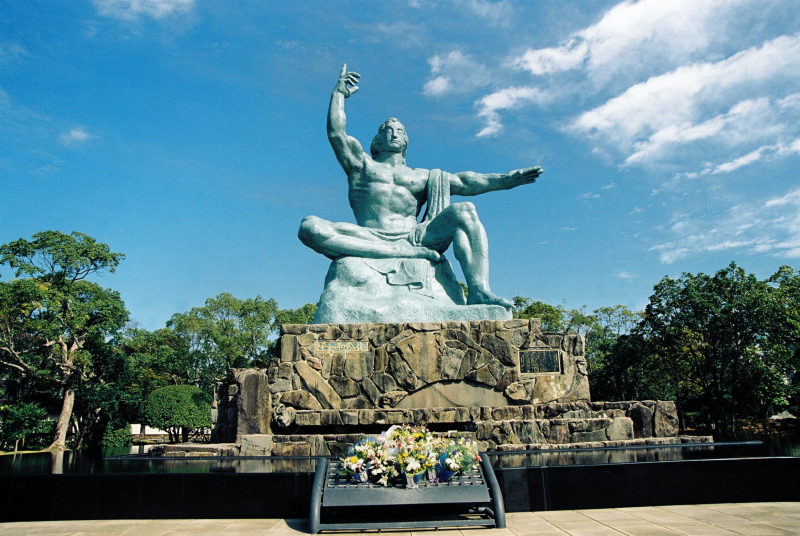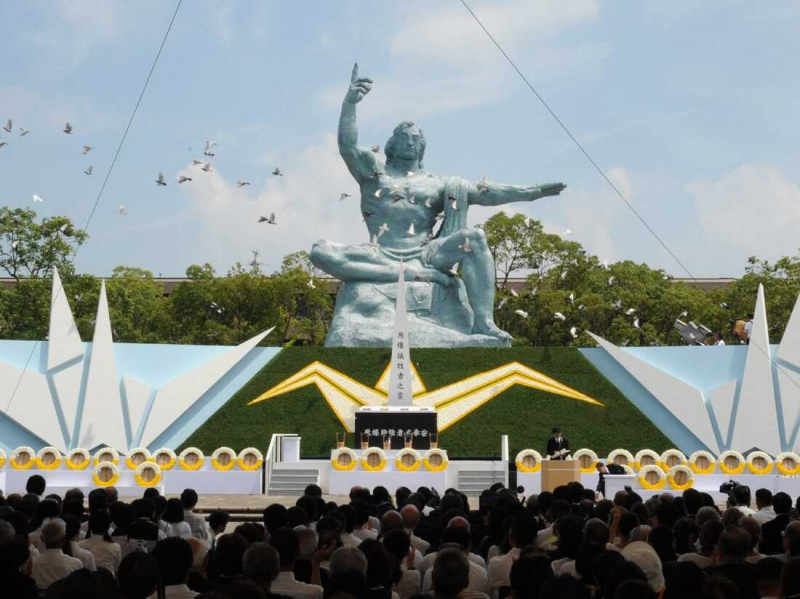Nagasaki Peace Park
Nagasaki Peace Park is a park in Nagasaki, Japan, that commemorates the city's atomic explosion on August 9, 1945, during World War II. It is located near the Peace Memorial Hall and the Atomic Bomb Museum.
Urakami Cathedral was built in 1955, and fragments of a concrete wall can still be seen near the hypocenter of the explosion. At the time, Urakami Cathedral was the largest church in East Asia. The 10-meter-tall Peace Statue, sculpted by Nagasaki Prefecture sculptor Seibo Kitamura, stands at the park's northern edge. The right hand of the statue represents the threat of nuclear bombs, while the outstretched left hand represents eternal peace. The gentle expression represents divine grace, and the gently closed eyelids are a prayer for the souls of the bomb victims. The folded right leg and extended left leg represent both meditation and the initiative to get up and save the world's people. The statue combines western and eastern art, religion, and ideology. A black marble vault in front of the statue contains the names of the atomic bomb dead and survivors who died in the years that followed.
Every year on the 9th of August, the anniversary of the atomic bombing, a Peace Memorial Ceremony is conducted in front of the statue, and Nagasaki's Mayor presents a Peace Declaration to the World.
A "Fountain of Peace" may be found at the park's southern end. This was built in August 1969 as a prayer for the spirits of the many atomic bomb victims who died while looking for water, as well as a devotion to world peace. A black stone plaque in front of the fountain bears lines from a poem written by Sachiko Yamaguchi, who was nine at the time of the bombing.
Location: Nagasaki, Japan












